Thread Pitch: How I stopped worrying and learned to love M13.5x1LH

When it comes to silencers, we’ve talked about thread pitch basics in the past. In those discussions, however, absent was any preferential recommendations of any patterns or handedness. Well, say no more fam – Derek Smith Of Blackstone Marketing (and formerly Gemtech/AAC) along with Todd Magee and Mike Smith Of Dead Air Silencers lay out some basic facts of why the M13.5x1LH thread pitch is better than the reigning U.S. champion 1/2×28 standard for 9mm pistols. I’ve included part of their discussion here, for the full story follow the link posted below.
Even though every one of my 9mm pistols is threaded standard, the discussion reminds me of why a move to the metric system is long overdue. Flame on.
https://allenarmstactical.com/general-info/thread-pitches-13-5lh-vs-1-2×28/2019/06/13/
Derek Smith of Blackstone Marketing – formerly of AAC & Gemtech
Mike Smith of Dead Air Silencers – former lead design engineer of AAC
Todd Magee – lead design engineer of Dead Air Silencers
Photo credits: Derek Smith
When it comes to 9MM thread pitches for handguns the European standard of M13.5×1 (LEFT HAND) LH is superior to the imperial thread pitch of ½-28 TPI. Now is it ten times better? No. Five times better? Probably. Twice as good? Absolutely. Let’s take a walk.
½-28 is the “standard” thread pitch for 9MM, .22LR, and 5.56x45MM firearms in the United States. The threads are ½ in diameter (at the major) and feature 28 threads per inch (TPI). While numerous thread drawings are available, I typically refer to the ones drawn by Mike Smith – formally of Advanced Armament Corporation.
Now let us take an educated look at the much derided and misunderstood M13.5-1LH. It is the standard thread pitch for 9MM firearms in Europe. It is also the factory choice for Glock, Heckler & Koch, and SIG. It features a coarser thread with 25.4 threads per inch compared to the 28 threads per inch of the imperial standard. It also is not threaded the full length of the muzzle and provides an unthreaded crown. This unthreaded portion is a major aid in threading as it all but eliminates the potential for cross threading, which is more likely with the finer and unprotected ½-28. See the following image. Not only is it mechanically better, but it has a much more sophisticated appearance. Lastly this unthreaded section provides better protection over ½-28. If the host firearm is inadvertently dropped, the end of the barrel does not have threads that could become damaged.

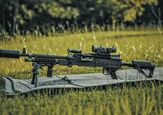

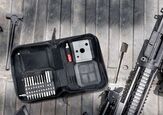



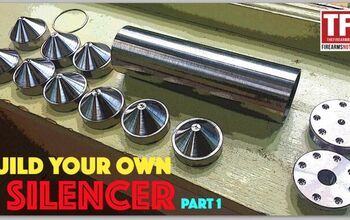

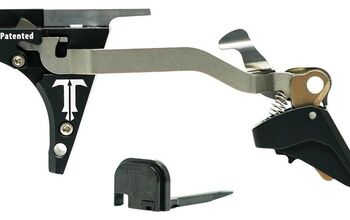

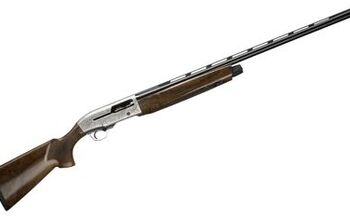

![[SHOT 2025] Kel-Tec PR57: Personal Defense Gone Wild](https://cdn-fastly.thefirearmblog.com/media/2025/01/21/23131/shot-2025-kel-tec-pr57-personal-defense-gone-wild.jpg?size=350x220)
![[SHOT 2025] Real Avid Displays New X3 Driver Kits](https://cdn-fastly.thefirearmblog.com/media/2025/01/28/00015/shot-2025-real-avid-displays-new-x3-driver-kits.jpg?size=350x220)
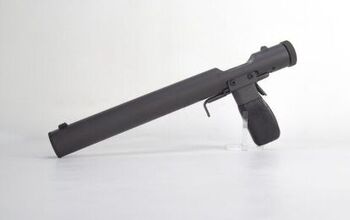

![[SHOT 2025] SIG’s ROMEO8T-AMR and JULIET3T Dynamic Reticle System](https://cdn-fastly.thefirearmblog.com/media/2025/01/27/12071/shot-2025-sig-sig-romeo8t-amr-and-juliet3t-dynamic-reticle-system.jpg?size=350x220)





![[SHOT 2025] Mars Inc.’s Precision Grenadier System](https://cdn-fastly.thefirearmblog.com/media/2025/01/24/07511/shot-2025-mars-inc-s-precision-grenadier-system.jpg?size=350x220)

Comments
Join the conversation
i find it impossible to "tighten" LH threads. If I get it tight on the barrel, my suppressor comes apart. If I get the suppressor tightly together, it loosens off my barrel. Incredibly annoying. (Most pistol suppressors disassemble to allow the changing of the thread pattern. This is the source of my problem).
13,5x1 LH is much better than the standard 1/2"x28.
first, it's presicion milled, not cut like in the sixties, it starts (on glock barrels) always on the same point, it provides you a cylinder / spigot in the front for better guidance and a tapered stop on the rear end for centering mounting brakes, silencers etc. the threading just secures the device against sliding off the barrel. while the usual thread does all these jobs at the same time - and as we know, a thread ist not made for centering.